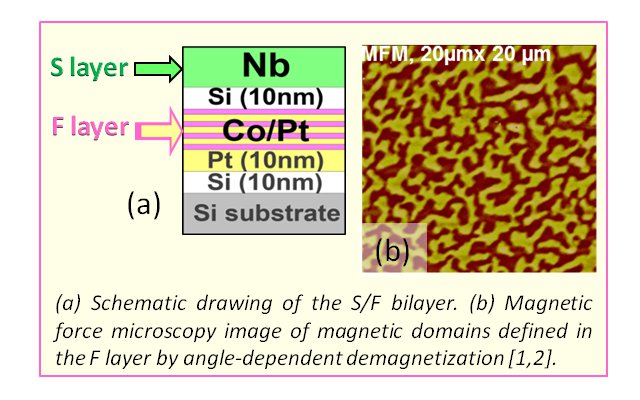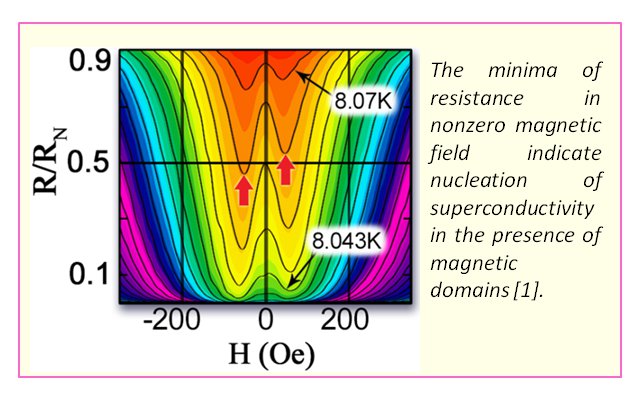Superconducting/ferromagnetic structures
Superconducting-ferromagnetic structures consisting of a sequence of nanometer-thin superconducting (S) and ferromagnetic (F) layers are a subject of many investigations, because they offer a chance to study the interactions between superconductivity and ferromagnetism, two competing long-distance orders, which are mutually exclusive in the bulk. Proximity effect occurs when the S and the F layers are in close contact, while long-range, electromagnetic interactions may be induced by any magnetic domains existing in the F layer. In recent years, we have conducted studies of this last type of interactions. They may be conveniently studied when proximity effect is eliminated by inserting insulating layer between S and F layers.


We use S/F bilayers, in which S layer is niobium, and the F layer is the ferromagnetic superlattice Co/Pt or Co/Pd, with perpendicular magnetic anisotropy (PMA). In structures with PMA the magnetic moments of the domains are oriented perpendicular to the layer surface. The magnetic domains create inhomogeneous magnetic field, which influences superconductivity in two different ways. First, it modifies the dependence of the superconducting critical temperature, Tc, on the external magnetic field, H (phase transition line). When H is homogeneous, Tc(H) is linear, with the maximum Tc at H = 0. In the presence of magnetic domains it becomes nonlinear, with two maxima shifted away from H = 0. This is caused by the partial compensation of the external magnetic field by the local field induced by magnetic domains, what changes the conditions for the nucleation of superconductivity, as described in our recent work [1]. The second effect originates from the influence of magnetic domains on the vortex pinning. The magnetic domains create very effective pinning centers for vortices, and attempts have been made to utilize this effect to enhance the critical current density. Recently, we have demonstrated that large enhancement may be achieved, by a factor of more than 10, but this requires careful tuning of the magnetic domain pattern [2]. Moreover, depending on the domain geometry, either the flux confinement at the sample edge, or the flux flow enhancement is observed [3].
[1] Tunable phase diagram and vortex pinning in a superconductor-ferromagnet bilayer, L. Y. Zhu, M. Z. Cieplak and C. L. Chien, Phys. Rev. B 82, 060503(R) (2010).
[2] Enhancement of vortex pinning in superconductor-ferromagnet bilayers via angled demagnetization, M. Z. Cieplak, L. Y. Zhu, Z. Adamus, M. Konczykowski, and C. L. Chien, Phys. Rev. B 84, 020514(R) (2011).
[3] Tuning vortex confinement by magnetic domains in a superconductor/ferromagnet bilayer, M. Z. Cieplak, Z. Adamus, M. Kończykowski, L. Y. Zhu, X. M. Cheng, and C. L. Chien, Phys. Rev. B 87, 014519 (2013).
